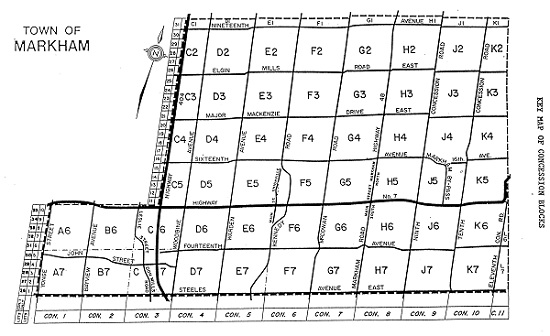TJ O'Pootertoot
Senior Member
Good question. I wondered the same earlier, but they are actually Markham concessions.
1st Concession: Yonge
2nd Con.: Bayview
3rd Con.: Leslie
4th Con.: Woodbine
5th Con.: Warden
6th Con.: Kennedy
7th Con.: McCowan
8th Con.: Markham Road/Highway 48
9th Con.: 9th Line
10th Con.: Ressor
11th Con.: 11th Line
12th Con.: York-Durham Line
13th Con.: Steeles
14th Con.: 14th Ave.
15th Con.: Highway 7
16th Con.: 16th Ave.
17th Con.: Major Mackenzie
18th Con.: Elgin Mills
19th Con.: 19th Ave.
20th Con.: Stouffville Road
Don't ask me why it shifts from north-south to east-west further along the list.
Toronto/York/East York/North York uses a different set of concessions:
1st Con.: Queen
2nd Con.: Bloor/Danforth
3rd Con.: St. Clair
4th Con.: Eglinton
5th Con.: Lawrence
6th Con.: Wilson/York Mills
7th Con.: Sheppard
8th Con.: Finch
9th Con.: Steeles
I once had this explained to me by a history expert and I'm sorry I can't recall it with precision but the gist of the York system (IIRC) was that the concessions went east from Yonge and after they got to the Durham line they just rotated, and used the consistent numbering system going north on the east-west roads; so those ARE concession numbers. The sideroads are a different system.
(Oh, and can I throw in Drewery/Cummer/McNicholl as a series of name changes that's always baffled me...?)





